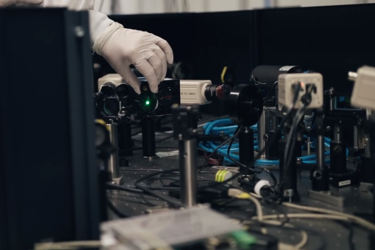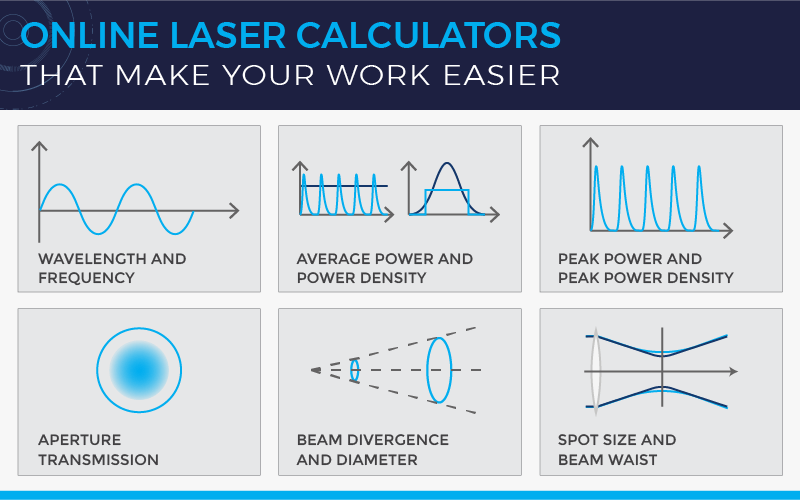How Can I Measure The Power Density Of My Laser?

Peak power, average power, power density, energy density… all of those terms can be quickly confused and mixed up even by experienced laser users. In this short article, we’ll focus our efforts on one of these parameters: power density. We’ll start with a quick definition and then we’ll dig right in as to why it’s relevant and how to measure it.
WHAT IS LASER POWER DENSITY?
The power density, as its name suggests, represents the quantity of energy in your laser beam per time unit per surface area. Usually, it’s measured in watts/cm2. Depending on your application, it might be crucial that you stay below a certain amount called the LIDT (Laser-Induced Damage Threshold) so your optical components don’t get damaged.
It can also be the opposite; you need the power density of your beam to be high enough so it cuts through a material. See our laser beam profiler in action in the video below as HiLASE Center is experimenting with material limits!
If we think about pulsed lasers, we usually refer to the concept as fluence or energy density, it’s slightly different, but the fundamentals are basically the same. It’s the concentration of energy, instead of the power, in a certain area of space. But, let’s not get carried away here and keep the focus on power.
CALCULATIONS
To determine power density, you essentially need two pieces of information. The first one is the size of your beam and the second one is how much power is contained in the beam. The maths here are pretty simple: you divide the power of your laser by the cross-section surface of the beam at the desired point in space and you’re done. This would give you the average power density of the laser beam at that point.
For some of you, gathering that information can be way easier than for others. It essentially comes down to what you have handy.
KNOW THE POWER!
So, about the power of your laser, the best way to get very accurate data is to shoot your laser beam on a properly calibrated, NIST-traceable power meter. This way you get the exact amount of power that’s getting out of it.
If you want to monitor its power while it’s in use, keep in mind that you could use our optical pick-off series, BA, which enables beam profiling, and power reading while letting the beam follow its course. This method would also provide everything that’s needed to calculate power density at once.
You could also get power readings via a display on your laser device itself. The value displayed on the laser usually relies on two types of data: either an integrated built-in power meter (so, an internal version of what’s described above) or some typical manufacturer data from the characterization phase of the product development.
HOW BIG IS THE BEAM?
Determining your laser’s beam size is a little less straightforward than for the power as there is no clear edge as to where a Gaussian beam stops. There are different conventions on the matter, but to know more about its definition, check out the “How does it work” and “Formulas” sections from our calculators or this article from our blog.
This being said, as for the power, you could simply use an instrument to measure it. The easiest way would be to use an ISO-compliant beam profiler camera just like ours.
You could also go for a more analog way using the knife-edge technique. It would require that you use a power detector. To do so, you have to place a sharp object (which has a very straight edge) to block the beam, orthogonal to its propagation axis.
As you move the edge across the beam, you progressively block it, reducing the intensity of light transmitted. You then monitor the percentage of power transmitted as a function of the knife-edge position. You can determine the beam diameter by measuring the position at which the power drops by a certain fraction.
Take note that, in real conditions, your beam’s cross-section probably looks more like an ellipsoid than a circle. So, assuming your beam propagation axis is z (in cartesian coordinates), to have an accurate measurement, you would have to do the knife-edge technique twice, once along the x-axis and once along the y-axis.
DAMAGE THRESHOLD
Now that you have all the pieces of the puzzle to determine the power density of your laser, let’s just take a step back for a moment. Before assuming the power density of your laser is below the LIDT and is safe to use, realize that what you are calculating is the AVERAGE power density of your laser beam for a specific cross-section.
For a top-hat-shaped beam, that value is pretty accurate over the whole surface, but if its shape is Gaussian or irregular, its power density would be much higher in the center than on the edges of the beam.
You could then, using the knife-edge technique, determine what fraction of the power is contained inside let’s say half the diameter of the total beam (centered in the middle) to get the average power density there.
Still, it would remain an average for the chosen section, so the risk of going over the damage threshold increases for more irregular intensity profiles. For a great-quality Gaussian beam, you could assume that, as a rule of thumb, the center will sit at around twice the average power density calculated. This is why, when you get close to LIDT, especially with irregular beams, add a safety factor or if it’s possible, measure it precisely!

